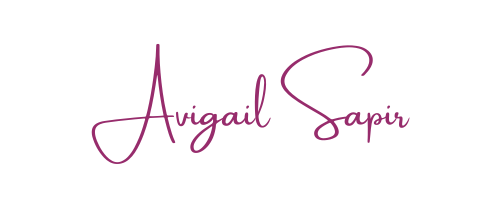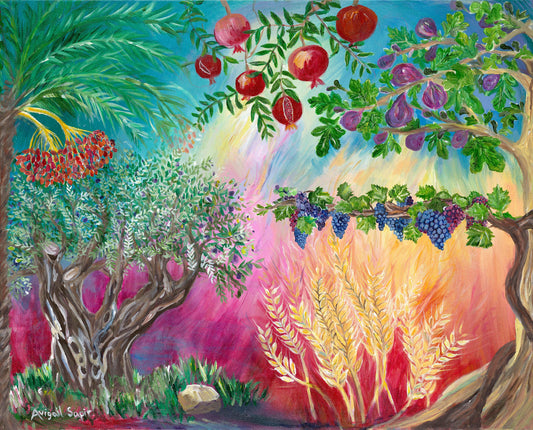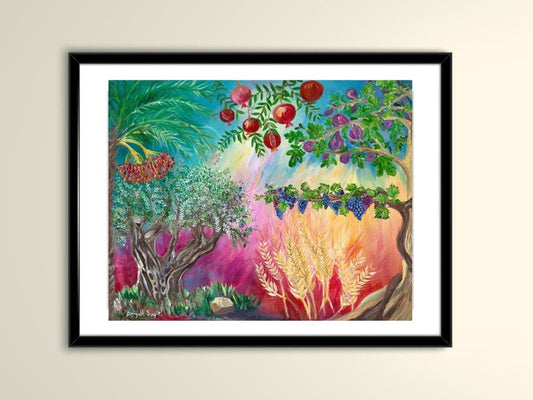Make Your Moment Last Forever
-
Seven Species - Fruits of Israel
Regular price From $65.00 USDRegular priceUnit price per$60.00 USDSale price From $65.00 USD
Everything You Need to Know About Sukkot Art
Sukkot is a Jewish holiday that celebrates the harvest and commemorates the wandering of the Israelites in the desert after their exodus from Egypt. It is also known as the Feast of Tabernacles, as it involves the construction and dwelling in temporary booths called sukkot. Sukkot is a time of joy and gratitude for the blessings of God and the bounty of nature.
One of the ways that Jews express their joy and gratitude on Sukkot is through art. Art can enhance the beauty and meaning of the sukkah, as well as reflect the themes and values of the holiday. Art can also be a form of worship and praise to God, who is the ultimate source of creativity and beauty.
Some of the most influential Jewish artists who have inspired Sukkot art are Marc Chagall, Reuven Rubin, and Nachum Gutman. These artists were pioneers of modern Israeli art, who developed their own distinctive styles and expressions based on their Jewish heritage, their connection to the land of Israel, and their personal experiences.
Marc Chagall (1887-1985) was a Russian-French artist who is widely regarded as one of the greatest Jewish artists of the 20th century. He is known for his colorful and imaginative paintings, which often incorporate elements of Jewish tradition, folklore, and mysticism. Chagall’s paintings also reflect his love for his hometown of Vitebsk, Belarus, where he grew up in a Hasidic Jewish community. Chagall’s paintings can inspire Sukkot art by using bright colors, cheerful motifs, and positive messages that evoke the joy and gratitude of the holiday. For example, one can paint scenes from the Bible or Jewish history that relate to Sukkot, such as Abraham welcoming guests into his tent, Moses receiving the Torah on Mount Sinai, or King Solomon building the Temple in Jerusalem. One can also paint images of nature, such as fruits, flowers, trees, and animals, that symbolize the harvest and God’s creation. One can also paint images of family and friends celebrating together in the sukkah, or angels visiting the sukkah as part of the custom of Ushpizin.
Reuven Rubin (1893-1974) was a Romanian-born Israeli painter who was one of the first Israeli artists to receive international recognition. He is known for his vibrant landscapes of Israel, which capture the beauty and diversity of the country. He often depicted scenes from rural life, such as farmers, shepherds, villages, and markets. He also painted portraits of famous Jewish figures, such as Theodor Herzl, Albert Einstein, and David Ben-Gurion. Rubin’s paintings can inspire Sukkot art by using earthy colors and simple techniques that convey the connection to the land and its folk history. For example, one can paint scenes from Israel that show the different regions and climates of the country, such as the Galilee, the Negev, or Jerusalem. One can also paint scenes that show the agricultural aspects of Sukkot, such as picking olives, grapes, or dates. One can also paint scenes that show the cultural diversity of Israel, such as different styles and themes of sukkot from various Jewish communities around the world, such as Moroccan, Yemenite, Polish, or American.
Nachum Gutman (1898-1980) was a Moldovan-born Israeli painter, sculptor, and author who was a pioneer of Israeli art. He is known for his playful and whimsical paintings, which often depict aspects of his personal and family histories, and those of Eastern European folklore at large. He frequently drew the countryside and people who inhabited it, transforming his observations into more fantastical and dream-like scenes through his unique artistic vision. Gutman’s paintings can inspire Sukkot art by using flat colors and two-dimensional shapes that create a naive and charming style. For example, one can paint scenes from childhood memories or stories that relate to Sukkot, such as building a sukkah with friends or family members or reading a book in a sukkah under a starry sky. One can also paint scenes from Jewish legends or fairy tales that relate to Sukkot, such as King Solomon’s magic ring or Elijah’s visit to Rabbi Akiva’s sukkah. One can also paint scenes that show the humor and joy of Sukkot, such as children playing with lulavim (palm branches) or etrogim (citrons), or animals joining in the festivities in the sukkah.
Sukkot art is a creative way to celebrate the holiday and express one’s joy and gratitude to God and nature. By following the examples of famous Jewish artists, such as Marc Chagall, Reuven Rubin, or Nachum Gutman, one can create beautiful and meaningful artworks that enhance the sukkah and reflect the themes and values of Sukkot.



